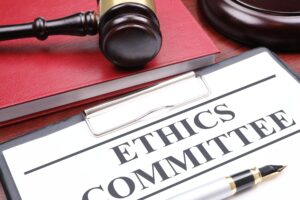What Is the Dress Code for PTE Exam?
When it comes to the dress code for the PTE exam, you’ve probably heard the saying, ‘Dress for success.’ But what exactly does that mean in the context of this crucial assessment?
Ensuring that you adhere to the appropriate attire can significantly impact your testing experience and outcome. So, before you step into the exam hall, make sure you are well-prepared, not just mentally, but also in terms of your appearance.
Dress Code Overview
- When preparing for the PTE exam, adhering to the designated dress code is crucial for a seamless testing experience. Dress code etiquette plays a significant role in creating a conducive environment for all test-takers. It’s essential to strike a balance between comfort and professionalism when choosing your outfit for the exam. Considering cultural considerations is paramount when deciding on your attire. Different cultures have varying norms regarding clothing, and it’s important to be respectful of these differences. Opting for attire that’s modest and culturally appropriate can help you avoid any potential distractions during the exam.
- While comfort is key for a lengthy exam like the PTE, professionalism shouldn’t be compromised. Selecting clothing that allows you to be comfortable while maintaining a polished look is ideal. Avoid overly casual attire like beachwear or pajamas, as they may not align with the expected level of professionalism for the exam setting. By carefully considering both comfort and professionalism, you can ensure that your attire enhances your testing experience rather than detracts from it.

Acceptable Attire
- Selecting appropriate attire for the PTE exam is crucial to ensure a professional and comfortable testing experience. When deciding what to wear, it’s essential to strike a balance between looking presentable and feeling at ease during the exam.
- Opting for formal wear, such as dress pants or a skirt with a button-down shirt or blouse, can convey a serious and focused demeanor. However, comfort shouldn’t be sacrificed for formality. Avoid overly restrictive clothing that may distract you during the test. On the other hand, casual clothing like clean jeans paired with a neat top or a polo shirt can also be suitable for the PTE exam. The key is to avoid anything too casual, such as shorts, flip-flops, or clothing with offensive language or images.
Prohibited Clothing
- To maintain a professional testing environment, it’s important to adhere to guidelines regarding prohibited clothing for the PTE exam. Clothing restrictions are in place to ensure fairness, prevent distractions, and uphold the integrity of the exam. When preparing for the PTE exam, it’s essential to be aware of the dressing requirements to avoid any issues on test day.
- Examples of prohibited clothing items typically include hats, hoodies, and sunglasses, as they could be used to conceal communication devices or cheat sheets. Additionally, clothing with offensive language or graphics isn’t allowed as it may disrupt other test-takers or create an uncomfortable environment. It’s also important to avoid excessive jewelry or accessories that could potentially cause distractions during the exam.
Footwear Guidelines
- Ensure that your footwear for the PTE exam complies with the specified guidelines to maintain a professional testing environment. When selecting your shoes for the exam, opt for closed-toe shoe types such as loafers, flats, or dress shoes. Avoid wearing sandals, flip-flops, or athletic shoes as they may not be considered appropriate footwear for the test setting. Closed-toe shoes are generally seen as more formal and professional, aligning well with the expectations of a standardized exam environment like the PTE.
- Closed-toe shoe types provide a polished and business-like appearance, which can help you feel more confident and prepared on exam day. Additionally, closed-toe shoes offer better protection and support for your feet, ensuring comfort throughout the test duration. By adhering to the recommended footwear guidelines, you aren’t only following the rules but also presenting yourself in a manner that reflects seriousness and respect for the exam process. Remember, your choice of footwear plays a subtle yet significant role in shaping your overall impression during the PTE exam.
Dressing Tips
- For optimal performance during the PTE exam, paying attention to your attire can significantly impact your overall test-taking experience. When considering dressing tips for the exam, color coordination and formal wear play crucial roles. Opt for solid colors or subtle patterns that aren’t distracting, as bright or flashy colors may divert your focus.
- Formal wear such as business casual attire is recommended to maintain a professional look. Comfort is key during the exam, so choose clothing that allows you to sit comfortably for an extended period. Avoid accessories that could be noisy or distracting, like jangly bracelets or loud watches. Instead, opt for minimal and subtle accessories that complement your outfit without drawing attention. Remember, the goal is to dress in a way that boosts your confidence and allows you to concentrate fully on the exam content.
Conclusion
In conclusion, adhering to the dress code for the PTE exam is essential to ensure a smooth testing experience. By following the guidelines on acceptable attire and avoiding prohibited clothing, test-takers can focus on their performance without any distractions. Remember to dress professionally and comfortably, and pay attention to footwear guidelines to avoid any issues on exam day. Following these dressing tips will help create a conducive testing environment for all candidates.


